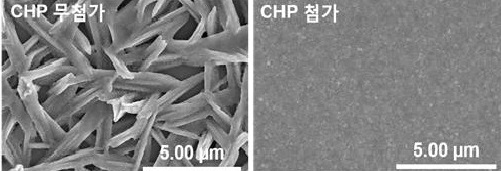Media Center
A multimedia mosaic of moments at GIST
GIST Excellence
[Press Release] Prof. Dong-Yu Kim"s Team Develops New Way of Making Perovskite Films
- 정명식
- REG_DATE : 2014.12.18
- HIT : 956
Fabrication Method Using New Additive Published in Scientific Reports
Study Hoped to Expedite Commercialization of Perovskite Solar Cells


A Korean research team has developed an improved method for fabricating perovskite films, which are considered a promising new material for solar cells, by using CHP as an additive in the fabrication process. The study is expected to contribute to the commercialization of perovskite solar cells.
The research was led by corresponding authors Prof. Dong-Yu Kim of GIST School of Materials Science and Engineering and Dr. Jin-Mun Yun of Korea Atomic Energy Research Institute (KAERI), conducted by first authors Ms. Ye-jin Jeon and Mr. Sehyun Lee of GIST, and supported by a grant from the National Research Foundation of Korea and the Ministry of Science, ICT and Future Planning.
The research results were online published on November 7, 2014 in Scientific Reports issued by Nature Publishing Group (Title: Planar Heterojunction Perovskite Solar Cells with Superior Reproducibility).
Perovskite solar cells (PeSCs) have attracted attention as competitive next-generation power sources. Their light-to-electric conversion efficiencies have rapidly increased to near 20% and further improvements are expected. However, the poor device reproducibility of PeSCs ascribed to their inhomogeneously covered film morphology has hindered their practical application.
The research team demonstrated high-performance PeSCs with superior reproducibility by introducing small amounts of CHP as a morphology controller into DMF. As a result, highly homogeneous film morphology, similar to that achieved by vacuum-deposition methods, as well as a high PCE and an extremely small performance deviation were achieved.
The research thus represents a method for realizing efficient and reproducible planar heterojunction (PHJ) PeSCs through morphology control, a step forward in the low-cost and rapid production of PeSCs by solving a major problem in PHJ perovskite photovoltaic technology.
Prof. Kim said, “Our study shows the possibility of high-efficiency PeSCs with an easy fabrication process. It is expected to help clarify the perovskite crystallization mechanism and to help expedite the commercialization of PeSCs.”
For further information or inquiries, please contact isso@gist.ac.kr.